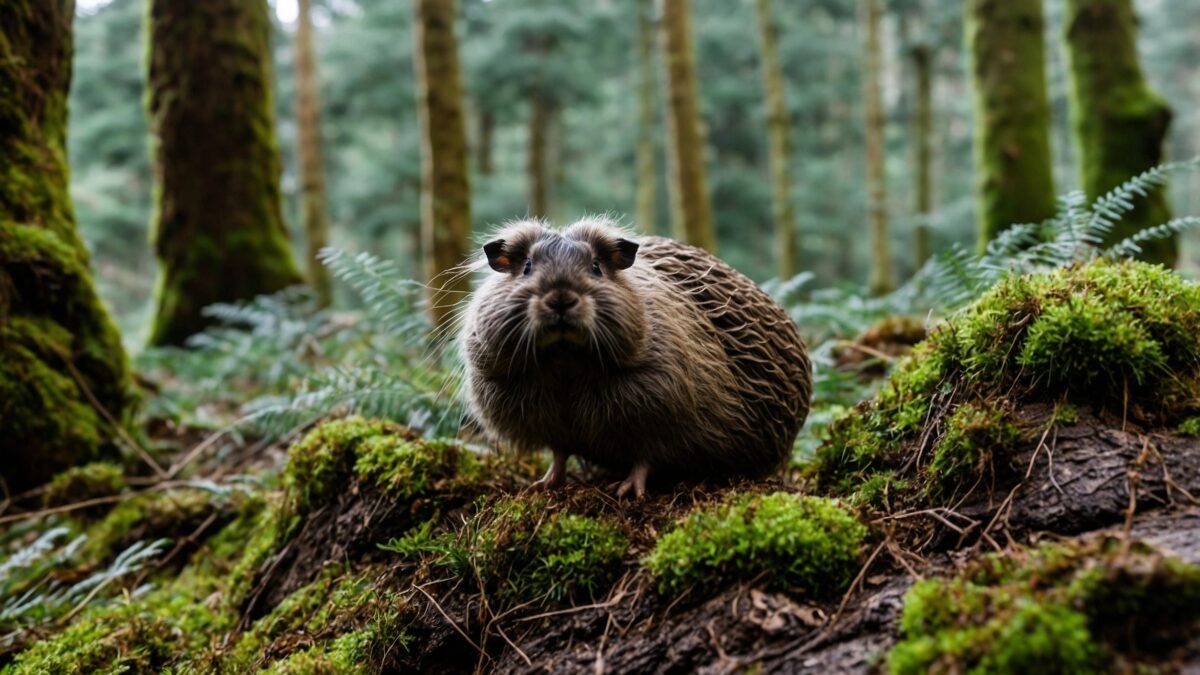
What Happened To Scotland’s Last Domesticated Haggis.
February 8, 2024
The Sacred Order of Haggis
August 3, 2024The Elusive Haggis animal: Scotland’s Hidden Wildlife Wonder.
One of Scotland’s most fascinating yet least understood creatures: the haggis animal. Often overshadowed by more famous Scottish wildlife like red deer and golden eagles, the wild haggis animal deserves its moment in the spotlight.
For centuries, Scotland’s rugged landscapes have harbored a secret known only to a select few: the existence of the wild haggis. These peculiar creatures, long dismissed as mere folklore, have recently captured the attention of cryptozoologists and wildlife enthusiasts alike.
Long thought to be merely a culinary legend, recent “discoveries” have revealed a rich ecosystem of haggis species across the Scottish landscape.
What is a Haggis Animal?
The haggis (Haggis scoticus) is a small, fur-covered mammal endemic to Scotland. Averaging 30-40 cm in length, these rotund creatures are perfectly adapted to life in the rugged Scottish landscape. Their most distinctive feature is their asymmetrical legs – shorter on one side than the other – an evolutionary marvel that allows them to swiftly navigate steep hillsides.
Habitat and Distribution
Haggis populations are spread across Scotland, with the highest concentrations found in the Highlands and scottish borders. They prefer areas with a mix of heather moorland and scattered woodlands, environments that provide both food and shelter. Recent surveys suggest that the Central Belt and Southern Uplands also host significant haggis populations, though in lower densities.
Behavior and Diet
Primarily nocturnal, haggis are most active during dawn and dusk. Their diet consists mainly of wild herbs, heather shoots, and berries, supplemented by the occasional insect or small invertebrate. This varied diet contributes to their renowned flavor, a topic we’ll tactfully sidestep for now.
Haggis are generally solitary, coming together only during the mating season in late autumn. This period, known as the “Great Haggis Gathering,” is marked by elaborate courtship displays and the males’ distinctive mating call – a sound often described as a cross between a whistle and a bagpipe’s drone.
The common haggis (Haggis vulgaris) is a small, rotund creature covered in coarse fur, typically brown or russet in color. Its most distinctive feature is its asymmetrical legs – shorter on one side than the other – an adaptation perfectly suited for swiftly circling the steep Scottish hillsides.
Researchers have identified three common haggis species, each adapted to its specific habitat:
- The Highland Haggis (Haggis montanus): Larger and woollier than its lowland cousins, this species sports a thick, shaggy coat to withstand harsh mountain winds.
- The Loch Haggis (Haggis aquaticus): With webbed feet and a waterproof coat, this semi-aquatic variety is often spotted near Scotland’s famous lochs.
- The Whisky Glen Haggis (Haggis inebriaticus): Found near distilleries, this species is known for its reddish nose and tendency to wobble when it walks. Haggis behavior remains largely a mystery, but eyewitness accounts describe them as primarily nocturnal, emerging at dusk to forage for their favorite foods: wild thyme, heather shoots, and the occasional dram of spilled whisky.
Conservation Status
While not currently endangered, haggis face several threats, including habitat loss due to land development and climate change. The Scottish Wildlife Trust has implemented several conservation programs, including the creation of protected “Haggis Highways” to allow safe passage between fragmented habitats.
Observing Haggis in the Wild
For wildlife enthusiasts hoping to spot a haggis, patience and stealth are key. Dawn and dusk offer the best viewing opportunities. The Isle of Skye and the Cairngorms National Park are popular haggis-watching destinations, though sightings are never guaranteed due to the animal’s shy nature.





